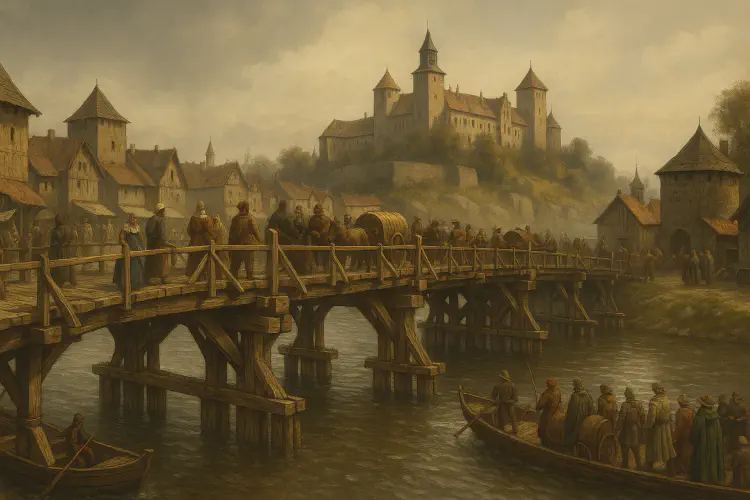Medieval bridges and river crossings
For centuries, the Vistula River shaped Krakow’s growth not only as a trade hub but also as a city divided and connected by its bridges and crossings.
- Boat Cruise in Krakow
- 2 min read

Early Crossings of the Vistula
In the medieval period, wooden bridges and ferries provided vital links across the river. These crossings connected Krakow’s Old Town, Kazimierz, and Podgórze, ensuring trade and communication across the growing city.
Importance for Trade and Daily Life
- Merchants and Caravans: Bridges allowed goods from markets and salt mines to flow northward.
- Pilgrims and Travelers: Crossings facilitated access to monasteries and abbeys along the Vistula.
- Military Strategy: Control of bridges was critical for defending Krakow and securing its role as Poland’s royal capital.
Challenges of Medieval Bridges
Wooden structures were vulnerable to floods, ice, and fire. Many bridges were rebuilt several times throughout Krakow’s history. Seasonal ferries often served as backups when permanent crossings were destroyed.
Notable Crossings in History
- The Early Wooden Bridge near Wawel: One of the first permanent links across the Vistula.
- Kazimierz Crossings: Key for connecting the Jewish District with the rest of Krakow.
- Podgórze Links: Later became central during periods of political upheaval, including the partitions and WWII.
Legacy of Medieval Crossings
Although none of the original medieval bridges survive, modern structures often follow the routes established in that era. Today, bridges like Father Bernatek’s Footbridge or Piłsudski Bridge reflect centuries of evolution, standing where ferries and wooden bridges once operated.
Why It Matters for Cruises
Private cruises pass under these historic routes, offering passengers a chance to imagine medieval traders, pilgrims, and guards crossing the Vistula. This perspective enriches the experience, connecting today’s leisure with Krakow’s centuries-old struggles and resilience.
